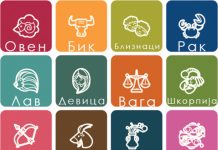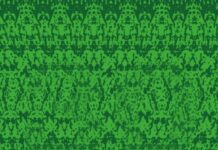Responsive design enables your site to adjust to fit the screen on the device where it appears. When choosing the best fonts for your website, consider the fact that typography can be as important as the words themselves. You’ll want to choose fonts that are readable, suit the stylistic theme of your site, and above all—on brand. Similar to a color scheme, you can pick primary, secondary and accent fonts to direct the way a visitor experiences your written content. Meanwhile, web development applies coding languages such as hypertext markup language (HTML), cascading style sheets (CSS), and JavaScript (for dynamic content).
However, if you use a CMS (a computer software application that manages the digital content of a website) you can learn how to make a website and make updates without the knowledge of using code. Wix is an example of a CMS, which functions as a user-friendly system for website content development. Wix even offers you a way to design a website with AI, as well as an advanced solution for web designers called Wix Studio. This course will help you achieve exactly that—from handling images to getting the most out of ARIA markup, you’ll learn how to approach accessibility from all angles. What’s more, you’ll also come away with the knowledge to conduct effective accessibility testing through working with users with disabilities. We have three courses (among our current offering of 32) that are specifically designed to help people enter the world of UX design. You’ll learn all areas of UX work and basic skills to practice UX work in Become a UX Designer from Scratch.
How much does it cost to design a website?
A web designer is responsible for the visual appearance and layout of a website. They work closely with clients to understand their needs and goals, and then they create a design that is both aesthetically pleasing and user-friendly. SEO, or search engine optimization, is the process of optimizing a website so that it ranks well on search engines. Since it plays a big part of your website’s success, we think it deserves to be included here with the functional elements. The more people who are able to find you on Google means the more visitors you’ll have using your website. Use your brand style guide to build visual elements with a consistent color scheme, imagery, and typeface.
- So how will your website provide visitors with a great experience from start to finish?
- Dive into data on the accessibility landscape in Level Access’s next webinar.
- But no matter what your job as a web designer entails, here are some aspects of web design that can also be found in UX design.
- WAI-ARIA is a technology that can help with such problems by adding in further semantics that browsers and assistive technologies can recognize and let users know what is going on.
- Generate a unique website with the help of industry-leading, AI-powered design expertise and guidance that’s tailored to you.
Article heading
Just as buttons and knobs enable users to interact with machines, user interface elements on a website allow people to put actions into motion. Applying fonts, adding padding, setting alignment, and choosing colors are all possible through CSS. Knowing how this styling works gives you the skills to create unique-looking websites and customize existing templates. HTML determines how a website’s content, images, navigation, and other elements display in a browser. Though you don’t need to be an expert in HTML to become a web developer, it helps to be familiar with how it works, even if you’re using a visual-based design platform like Webflow.
When designing a website of your own, you can use website https://design-gloss.com/ templates in a wide range of categories to provide a solid infrastructure for your site’s layout. If you want to design a layout from scratch, we recommend using wireframes to start. This process will allow you to draft out the layout of your website before the implementation process. Planning your website layout is like setting its foundation, since it will determine the arrangement and sequence of visual elements on each page of your website. This critical step in web design plays a role in a site’s visual appearance, level of usability, and amplifying its message. Rhythm refers to the repetition of elements in order to create consistency, cohesiveness, or to amplify a certain message. Repeating characteristics such as your logo, brand colors, including complementary colors, and using the same typeface, will also strengthen your brand identity and presence on the web.
A website’s structure plays an important role in both user experience (UX) and search engine optimization (SEO). Your users should be able to easily navigate through your website without encountering any structural issues. If users are getting lost while attempting to navigate through your site, chances are “crawlers” are too. A crawler (or bot) is an automated program that searches through your website and can determine its functionality. If you can dish out the cash, some businesses hire a designer to design the appearance of the site, and then hire a developer to make the website come to life through coding. But if you’d rather do it yourself and save tons of cash, there are many no-code web design tools on the market today that make it easy for non-technical users to build a website using pre-built, customizable templates.
Online courses are the key to the enterprise of obtaining a solid design education, which goes a long way to sharpening the skills and mindset you’ll need as a successful designer. Your ability to create beautiful aesthetics as a web designer will also come in handy when making the switch to UX design. Firstly, aesthetics is a great tool to augment your communications with internal stakeholders. The feel, then, involves making the experience of using a product as pleasant and enjoyable as possible. It’s built by crafting the interactions between the user and the product, as well as the reactions they have when (and after) using the product.
Page pixel width may also be considered vital for aligning objects in the layout design. The most popular fixed-width websites generally have the same set width to match the current most popular browser window, at the current most popular screen resolution, on the current most popular monitor size. Most pages are also center-aligned for concerns of aesthetics on larger screens. UX design is the art of designing products so that they provide the optimum possible user experience. If this description sounds broad, it’s because the nature of UX design is pretty broad.




























